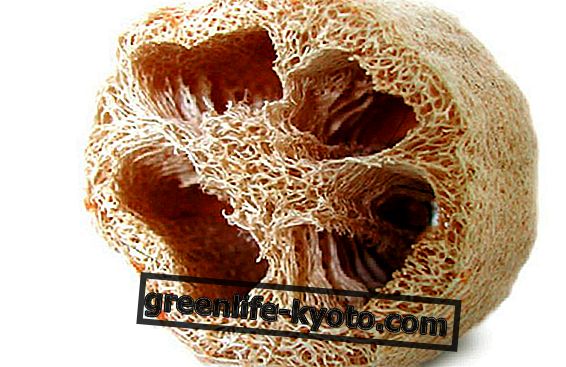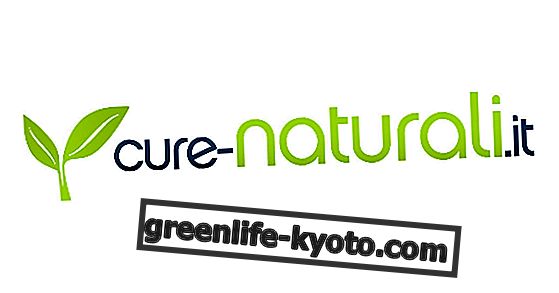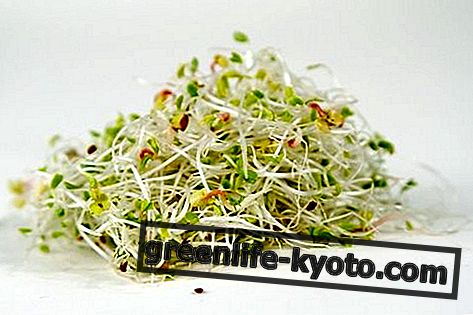
Ginkgo Biloba, a tree native to China, appeared on Earth about 200 million years ago. Therefore contemporary of Dinosaurs, it has managed to survive all the climatic and geological changes of our planet up to the present day, so much so as to be called " living fossil " (as a very rare representation of prehistoric flora).
It is very long-lived and is currently cultivated throughout Asia (it is a sacred tree in Japan) but then introduced also in Europe and in all temperate climate areas. Its name derives from the combination of the term " Yin-Kuo " (which indicates the fruit) and the reference to its bilobate leaves (with two lobes).
The phytotherapeutic complex is extracted from its leaves (ginkgolides, glucosides, flavones) which boasts three very important properties:
1. Vasoprotective of blood vessels : more precisely, the Ginkgo is " capillarotropic ", ie it improves the functionality of the blood capillaries, and it does so in the following way: - it improves their resistance and their tone; -decreases their permeability to liquid leaks.
The capillaries have the task of transporting nutrients and oxygen to the cells of all the organs, and of "dragging" away their waste and carbon dioxide (at this level, however, they take on the name "venule") and it is therefore clear the utility of this property. In fact, thanks to Ginkgo, capillaries are more efficient and better resist disease. As a result, all organs are better nourished and can more easily eliminate their waste.
The organs of the body are therefore more functional .
2. Antithrombotic: in particular, the Ginkgo, limits the activity of the PAF (Platelet-Activating Factor) that is the Factor activating the platelets. These blood components (platelets) play a fundamental role in promoting coagulation ; therefore the Ginkgo limits their action and makes the blood more fluid . In this way the Ginkgo limits the formation of thrombus and atherosclerotic plaques, thus preventing degenerative diseases of the blood vessels.
It is in fact known that blood coagulation does not occur only when it comes into contact with the outside (in wounds), but it can also occur internally in the bloodstream, with the formation of small '' thrombi ' '. These thrombi flow together with the blood and can reach vital organs (such as the heart or brain) and, if there is a predisposition or pathology of the vessels already in place, they can hinder their blood supply by eliminating nutrients and 'oxygen; it follows the possibility of heart attacks or strokes .
The predisposition arises from heredity, that is, all those who have a family history of cardiovascular diseases must be considered "predisposed"; instead the pathologies already in place that can lead to the aforementioned consequences may be, for example, high levels of cholesterol and triglycerides, atherosclerosis, other cardio-circulatory diseases in place). PAF (limited by Ginkgo) is also one of the mediators of the inflammatory response, so Ginkgo also has anti-inflammatory activity .
3. Antioxidant : Ginkgo prevents damage caused by free radicals, acting as a "scavenger" (free radical scavenger) and inactivating them. It also acts at the level of the liver (in the P450 microsomal complex), also reducing their formation. The antioxidant action prevents the aging of all cells (anti-age) and therefore also of those of the blood vessels and of the organs that supply blood. Ginkgo therefore prevents diseases due to their "destructive" action of the cells ( chronic-degenerative diseases, including vascular diseases ).
The vasoprotective and antithrombotic properties are obviously useful to the whole organism, in particular however there is an organ that more than any of them immediately benefits: the brain. By feeding and oxygenating it better, and by removing its waste more quickly, the brain improves its functionality . Thus the cognitive, concentration, attention, learning and memorization abilities increase. Furthermore, mental deterioration (normal, which occurs with advancing age) is slowed down (also thanks to antioxidant activity). This is very useful for preventing dementia diseases in the elderly .
Purposes
The three properties of Ginkgo ( vasoprotective, antithrombotic, antioxidant ) and their particular benefit on the brain, give this plant two main skills.
> Preventive and therapeutic capacity of the following phenomena or diseases: - difficulty of concentration and memory ; - senile dementia, Alzheimer's dementia; -prevention of damage from smoking and venous thrombosis ; -aterosclerosis, ischemia, heart attack, stroke, ischemic heart disease, hypertension ; - venous insufficiency of the lower limbs ( swollen legs, varicose veins ); - obliterating arteriopathies of the lower limbs; -Raynaud syndrome (excessive spasms of peripheral vessels); - arterial circulation deficiency, intermittent claudication, retinopathy, cellulitis; - tinnitus, vertiginous syndromes; - diabetic microangiopathy; - asthmatic forms (because PAF also mediates bronchoconstriction).
> Tonic capacity of the "performance" of the brain Ginkgo is the best mental tonic, for its ability to improve concentration - learning - memory, it is recommended for students ( over 16 years of age ) and for those who do conceptual work. Among the supplements on the market for this purpose, the formulations of the dried extract in tablets are to be preferred, as it is easier to know the percentage of active substances.
> Other skills Of particular interest is the (real) capacity of Ginkgo biloba to improve sexual desire and erection (especially if associated with Ginseng ).
The association with Ginseng would also seem to increase Serotonin levels, this could be very useful in the treatment of psycho-behavioral disorders .
Undesirable effects and contraindications
The side effects are infrequent at the normal dosages prescribed (or better, those defined in the Ginkgo supplement packages), and may be the following: - digestive problems; -cefalea.
Ginkgo should not be used in the following cases: - children under the age of 16; - blood coagulation problems; - epilepsy, convulsions; -preoperative management (or proximity of dental interventions); -epatopatie; - pregnancy and lactation.
The interactions with drugs may be multiple : anticoagulants, warfarin, aspirin, acetaminophen, caffeine, ergotamine, garlic, willow, pentoxifylline, ticlopidine, thrombolytics, IMAO, papaverine, nifedipine, digoxin, trazodone, diltiazem, omeprazole, hypoglycemic agents, haloperidol, nicarpidine, melilot, salicylates, benzodiazepines, ... If you take medication, consult your pharmacist or doctor before using Ginkgo biloba.













